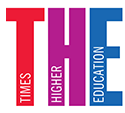 Rethink how you do everything, Australian universities urged
Rethink how you do everything, Australian universities urged
Reassessing operations through an institutional mission lens will prove more palatable than business-driven decisions, says ex-Adelaide boss
Australian universities have been urged to double down on their institutional missions and execute a “bottom-up” transformation of every aspect of their operations as they confront an operating environment that “has never been so bleak”.
Former University of Adelaide vice-chancellor Warren Bebbington said the coronavirus pandemic had saddled university leaders with unprecedented challenges. But it also constituted a “pivotal opportunity to rethink their institutions”, much as Wilhelm von Humboldt had conjured the prototype research university from the “demoralising shadow” of Berlin’s occupation by Napoleon’s forces.
Professor Bebbington said universities needed to re-evaluate everything from their tuition fees, course delivery, student support, administration, teacher development and international partnerships to their size, infrastructure, academic calendar, fundraising, employment arrangements and participation in global rankings.
Writing in the journal Studies in Higher Education, he said all activities and changes must be weighed against their contribution to institutional goals. “A university leader always needs to ask: will the proposal further the university’s mission and stay true to its core values?”
Now a fellow with the University of Melbourne’s LH Martin Institute, he said today’s “multi-varsities” had drifted beyond their core business of teaching and research to advising businesses, “pleasing” governments and producing “job-ready graduates” in preferred occupations. “There are so many purposes, and each has resource implications,” he told Times Higher Education.
“It’s a great moment to think about what really is essential – the things that no one else can do as well as universities – [and] focus on preserving those.”
While such a process would “raise hard questions”, they would ultimately prove more palatable than business-driven spending cuts. “Returning a university to its fundamental mission is something that, in the end, staff will support.”
Vice-chancellors must embrace reforms that address not only the immediate threats from the pandemic – campus restrictions, border closures and plummeting institutional finances – but also new modes of learning, evolving graduate needs and the “curse” of Australian universities’ “enduring sameness”, he writes in his article.
Universities would need to play to their strengths by focusing their research in limited areas or by distinguishing themselves in teaching at graduate or undergraduate level – “not necessarily both”.
“Such a focusing of purpose by universities themselves would address the [government’s] ‘job-ready graduate’ agenda more effectively than any legislative intervention can hope to,” the article says.
It advocates a workforce restructure that replaces “piecemeal casual contracts” with “a menu of salaried positions, fulltime and fractional, with the bandwidth to care year-round for students and conduct sustained research”.
“Discipline specialists” could assemble full-time workloads from multiple “fractional contracts” at “geographically dispersed universities”. They would teach both face-to-face and remotely, with their duties arranged to “husband” substantial research time.
The costs of these staffing changes could be met by abandoning “unneeded capital programmes”, the article says. Universities should jettison plans for new lecture theatres and convert existing ones into “interactive learning commons” and innovation hubs.
They should also adopt “genuinely year-round operations”, forsaking “standard but fundamentally inefficient” academic calendars based around semesters or trimesters. Students could come together at premises rented from local schools, community centres or businesses – “a far less costly arrangement than providing new campus buildings”.
0 Comments